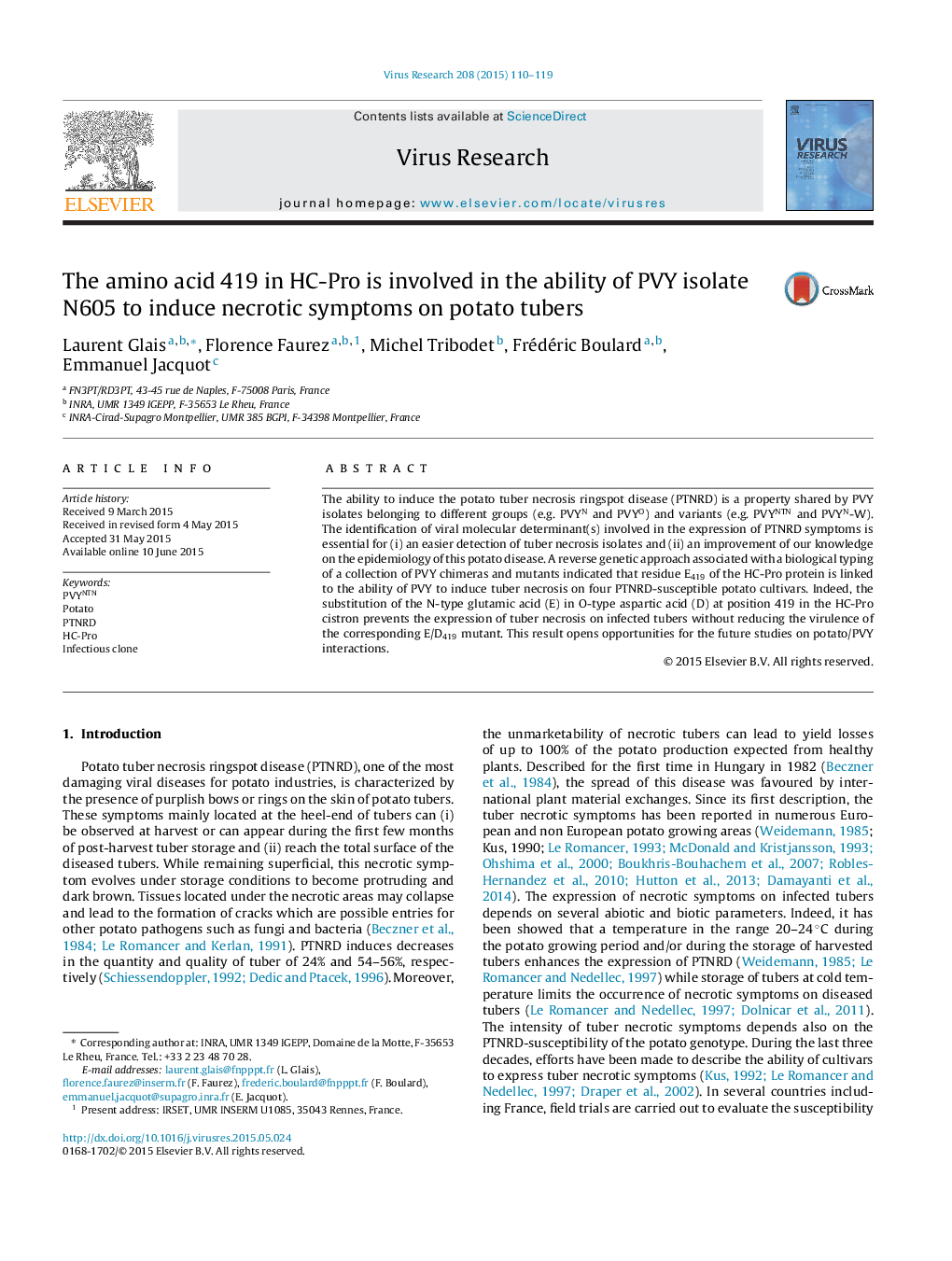| Article ID | Journal | Published Year | Pages | File Type |
|---|---|---|---|---|
| 3428120 | Virus Research | 2015 | 10 Pages |
•Some PVY isolates are able to induce necrosis on potato tubers.•We research viral molecular determinants involved in PVY pathogenicity.•We apply a reverse genetic approach.•Residue E419 of HC-Pro protein is involved in tuber necrosis.•We improve our knowledge on potato/PVY interactions.
The ability to induce the potato tuber necrosis ringspot disease (PTNRD) is a property shared by PVY isolates belonging to different groups (e.g. PVYN and PVYO) and variants (e.g. PVYNTN and PVYN-W). The identification of viral molecular determinant(s) involved in the expression of PTNRD symptoms is essential for (i) an easier detection of tuber necrosis isolates and (ii) an improvement of our knowledge on the epidemiology of this potato disease. A reverse genetic approach associated with a biological typing of a collection of PVY chimeras and mutants indicated that residue E419 of the HC-Pro protein is linked to the ability of PVY to induce tuber necrosis on four PTNRD-susceptible potato cultivars. Indeed, the substitution of the N-type glutamic acid (E) in O-type aspartic acid (D) at position 419 in the HC-Pro cistron prevents the expression of tuber necrosis on infected tubers without reducing the virulence of the corresponding E/D419 mutant. This result opens opportunities for the future studies on potato/PVY interactions.
